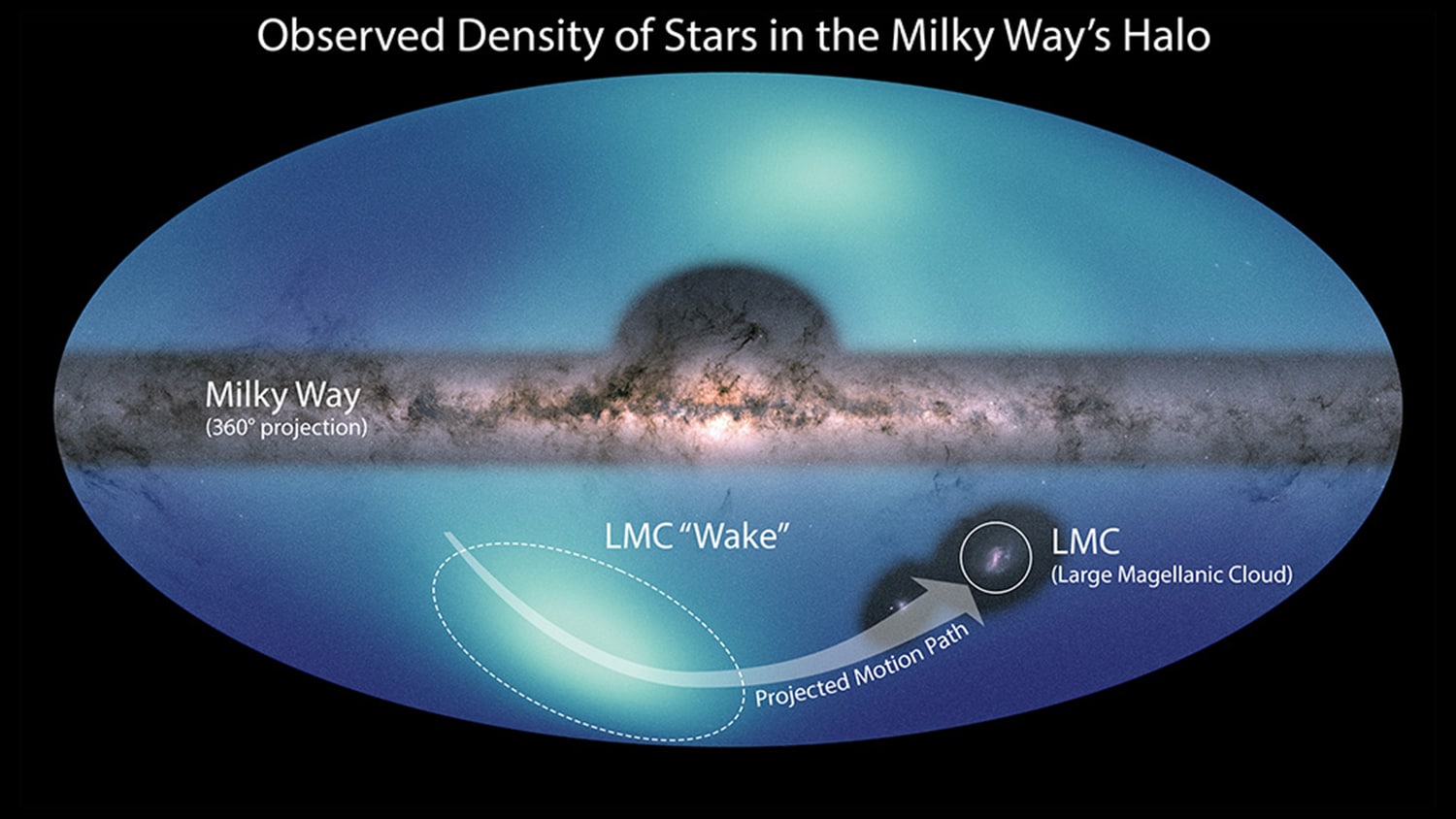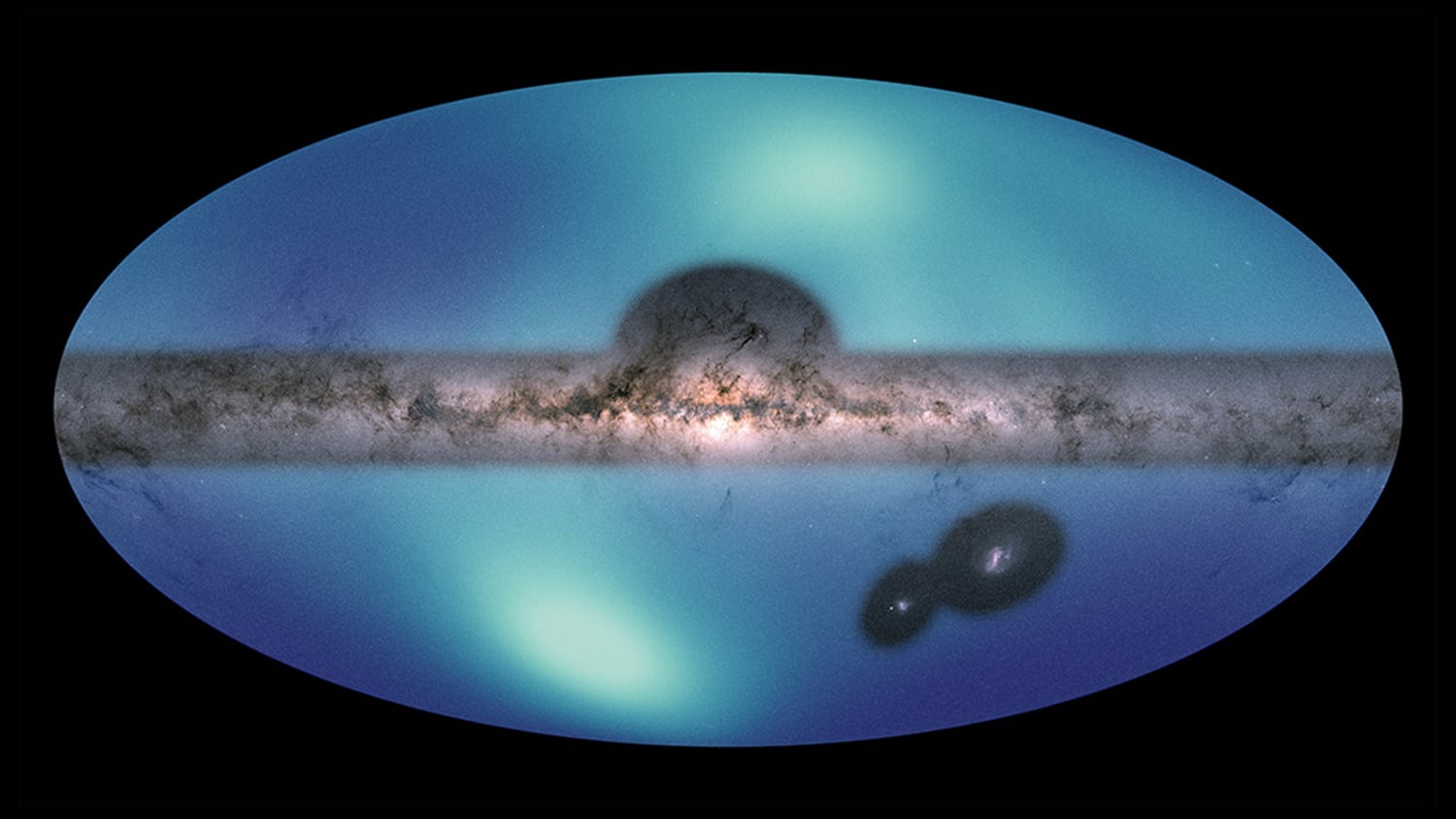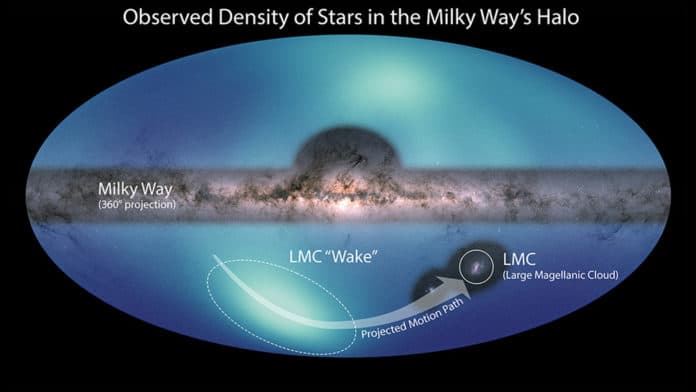Using data from NASA and ESA (European Space Agency) telescopes, astronomers have released a new all-sky map of the outermost region of our galaxy, known as the galactic halo. According to scientists, the region may contain a massive reservoir of dark matter, a mysterious and invisible substance thought to make up the bulk of all the mass in the universe.
The feature of the new map is a wake of stars, stirred up by a small galaxy set to crash into the Milky Way.
The map reveals how a small galaxy called the Large Magellanic Cloud (LMC) has sailed through the Milky Way’s galactic halo like a ship through water. Its gravity is creating a wake in the stars behind it. The wake observed in the new star map is thought to be the outline of this dark matter wake; the stars are like leaves on the surface of this invisible ocean, their position shifting with the dark matter.
This is the first map tata offers a similar picture of the halo’s outer regions, where the wake is found – about 200,000 light-years to 325,000 light-years from the galactic center. Past study has indicated at the wake’s existence, but the all-sky map confirms its presence and offers a detailed view of its shape, size, and location.
The disturbance in the halo offers astronomers a unique opportunity to study dark matter. Despite the fact that dark matter doesn’t emit/reflect/absorb lit, the gravitational influence of dark matter has been observed across the universe.


Credits: NASA/ESA/JPL-Caltech/Conroy et. al. 2021
Various studies have suggested that the interaction between dark matter and the Large Magellanic Cloud affects our galaxy. The LMC orbits the milky way. Because of this orbit, the gravity of dark matter drags on the LMC and slows it down, causing the dwarf galaxy’s rotation to get smaller and smaller until the galaxy finally collides with the Milky Way in about 2 billion years.
Rohan Naidu, a doctoral student in astronomy at Harvard University and a co-author of the new paper, said, “This robbing of a smaller galaxy’s energy is not only why the LMC is merging with the Milky Way, but also why all galaxy mergers happen. The wake in our map is a really neat confirmation that our basic picture for how galaxies merge is on point!”
Charlie Conroy, a professor at Harvard University and an astronomer at the Center for Astrophysics | Harvard & Smithsonian, who co-authored the study, said, “You can imagine that the wake behind a boat will be different if the sailing through water or through honey. In this case, the properties of the wake are determined by which dark matter theory we apply.”
University of Arizona doctoral student in astronomy Nicolás Garavito-Camargo, who led work on the model used in the paper, said, “Confirming our theoretical prediction with observational data tells us that our understanding of the interaction between these two galaxies, including the dark matter, is on the right track.”
Gurtina Besla, a co-author of the study and an associate professor at the University of Arizona, said, “It’s a really special set of circumstances that came together to create this scenario that lets us test our dark matter theories. But we can only realize that test with the combination of this new map and the dark matter simulations that we built.”
